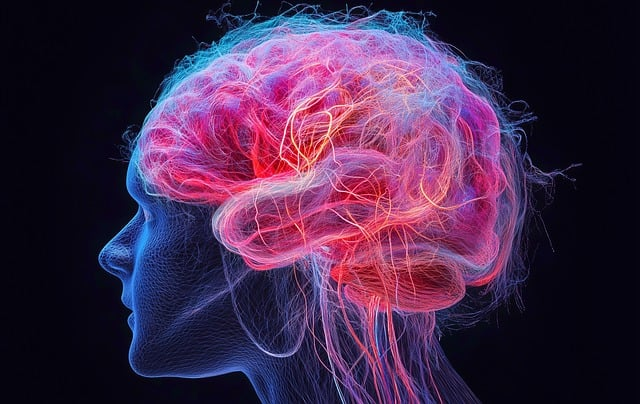Understanding AI Regulation: California Law, Implications, and Case Studies

Introduction
Artificial Intelligence (AI) is transforming industries globally, and California stands at the forefront of this technological revolution. As AI systems become more integrated into real and virtual environments, understanding the legal landscape governing their use, including various aspects of artificial intelligence regulation, is crucial. This article delves into California’s AI laws, exploring key regulations, real case law, and the implications for businesses and individuals alike.
Alt text: AI regulation compliance checklist for high-risk AI systems
Overview of California Artificial Intelligence Regulation
California has been proactive in addressing the legal challenges posed by AI technology. The state recognizes the need to balance innovation with consumer protection, leading to the implementation of several laws that directly or indirectly regulate AI systems.

Key Regulations and Policies
California Consumer Privacy Act (CCPA)
The California Consumer Privacy Act (CCPA) is a pivotal regulation that impacts AI developers and users. It grants California residents the right to know what personal data is being collected and how it’s used.
- If this then that: If a business collects personal data through AI algorithms, then it must comply with CCPA by providing transparency and allowing consumers to opt-out.

California Privacy Rights Act (CPRA)
Building upon the CCPA, the California Privacy Rights Act (CPRA) enhances consumer privacy protections and establishes the California Privacy Protection Agency.
- Key Implications: Businesses utilizing AI for data processing must implement stricter compliance measures to protect consumer data.
Autonomous Vehicle Regulations and AI Systems
California has specific laws regulating the testing and deployment of autonomous vehicles, a sector heavily reliant on AI.
- Requirements: Companies must obtain permits and report disengagements and collisions to the Department of Motor Vehicles (DMV).

Alt text: Preventing algorithmic discrimination in AI decision-making processes
Regulatory Framework
Navigating the regulatory landscape for artificial intelligence (AI) in the United States can be quite complex, given the absence of a comprehensive federal legislation specifically targeting AI. Instead, various federal agencies have stepped in to provide guidance and regulations that touch on different aspects of AI. For instance, the Federal Trade Commission (FTC) has issued guidelines to ensure consumer protection in the use of AI, emphasizing transparency and fairness. Meanwhile, the Department of Defense has established policies to govern the development and deployment of AI in military operations, ensuring that these technologies align with national security objectives.
On the state level, California has been a trailblazer with its AI Transparency Act, mandating that companies disclose when AI is used in decision-making processes. This law aims to foster transparency and build public trust in AI technologies. Other states, such as New York and Illinois, are also making strides by introducing bills aimed at regulating AI, although these have yet to be enacted. This patchwork of regulations underscores the need for businesses to stay informed and compliant with both federal and state-level AI laws.
AI Systems and Risk Categorization
AI systems are not created equal, and their potential impact on individuals and society can vary significantly. This has led to the categorization of AI systems into different risk levels. High-risk AI systems, such as those used in healthcare or financial services, are subject to more stringent regulations and oversight to ensure their safe and ethical use. These systems have the potential to significantly affect people’s lives, making it crucial to implement robust safeguards.
On the other hand, low-risk AI systems, like chatbots or virtual assistants, may not require the same level of regulatory scrutiny. However, they still need to adhere to basic standards of transparency and fairness. The EU AI Act exemplifies a risk-based approach to AI regulation, categorizing AI systems into high-risk, medium-risk, and low-risk levels. Under this framework, high-risk AI systems would need to meet rigorous requirements for transparency, accountability, and human oversight, ensuring that they operate in a trustworthy and ethical manner.
If This Then That: Legal Implications for High Risk AI Systems
Understanding the cause-and-effect within AI law is essential.
- If an AI system causes harm, then the entity responsible for the AI could be liable under product liability laws.
- If AI makes autonomous decisions, questions about accountability and transparency will arise, necessitating clear policies that ensure these decisions align with human-defined objectives.
Alt text: Implementing responsible AI practices to mitigate risks
Real Case Law in California AI
Case Study: Lemmon v. Snap Inc.
In Lemmon v. Snap Inc., the plaintiffs sued Snap Inc. over a car accident resulting from the use of Snapchat’s speed filter, which they argued encouraged reckless driving.
- Outcome: The court allowed the case to proceed, highlighting that companies could be held liable for the foreseeable misuse of their AI-powered features.
The role of generative AI in legal case studies
Case Study: White v. Samsung Electronics America, Inc.
While not directly about AI, this case sets a precedent for AI-generated likenesses.
- Summary: Vanna White sued Samsung for using a robot that resembled her in an advertisement.
- Implication: The use of AI to recreate a person’s likeness without consent could lead to right-of-publicity claims.
Compliance and Enforcement
Ensuring compliance with AI regulations is a critical aspect of responsible AI deployment. Companies must implement comprehensive policies and procedures to guarantee that their AI systems are transparent, explainable, and fair. This includes conducting regular audits, providing clear documentation, and ensuring that AI systems do not perpetuate biases or discriminate against any groups.
Enforcement of these regulations is equally important. Regulatory bodies like the FTC have the authority to investigate and penalize companies that fail to comply with AI laws. This enforcement mechanism is essential to maintaining public trust and ensuring that AI technologies are used responsibly. Companies must stay vigilant and proactive in their compliance efforts to avoid legal repercussions and contribute to the development of trustworthy AI systems.
EU AI Act and California AI Law
The EU AI Act and California AI Law represent two significant efforts to regulate the use of AI, each with its own scope and focus. The EU AI Act proposes a comprehensive framework that includes stringent requirements for transparency, accountability, and human oversight. It categorizes AI systems based on their risk levels, with high-risk systems facing the most rigorous regulations. This approach aims to ensure that AI technologies are developed and used in ways that are safe, ethical, and beneficial to society.
In contrast, the California AI Law, also known as the AI Transparency Act, specifically requires companies to disclose when AI is used in decision-making processes. This law is part of California’s broader effort to enhance consumer protection and promote transparency in AI applications. While the California AI Law is more focused in scope compared to the EU AI Act, both regulations share the common goal of fostering responsible AI use.
Together, these laws highlight the global movement towards more robust AI regulation, emphasizing the need for transparency, accountability, and ethical considerations in the development and deployment of AI systems. Businesses operating in multiple jurisdictions must navigate these regulatory landscapes carefully to ensure compliance and build public trust in their AI technologies.
Impact on Businesses and Individuals
For Businesses
- Compliance Costs: Companies may face increased costs to ensure their AI technologies comply with California laws.
- Innovation Balancing: Businesses must balance innovation with legal responsibilities to avoid litigation and penalties.

For Individuals
- Privacy Protections: Individuals have greater control over their personal data and how it’s used by AI systems.
- Legal Recourse: Consumers can take legal action if their rights are violated by AI technologies.
- Law Enforcement Agencies: The integration of AI systems into law enforcement agencies raises concerns about civil rights and ethical standards. It is crucial to establish regulatory frameworks that ensure responsible AI use to protect individual rights.
Future of Generative AI Law in California
California continues to pioneer AI legislation, with potential future laws focusing on:
- AI Transparency: Requiring companies to disclose when AI is used in decision-making processes.
- Ethical AI Development: Establishing guidelines to prevent biases and ensure fairness in AI algorithms.
- AI Accountability: Clarifying liability issues when AI systems malfunction or cause harm.
Developing responsible AI systems with ethical considerations
Conclusion
California’s approach to AI law reflects a commitment to fostering innovation while protecting consumers. By understanding the current regulations and anticipating future legal developments, businesses and individuals can navigate the AI landscape responsibly and effectively.

Related Terms AI Regulation, High-Risk AI, AI Innovation, Generative AI, Data Privacy, Algorithmic Discrimination, Facial Recognition, Automated Decision Tools, Responsible AI, Artificial Intelligence Advisory Council
FAQs

1. What is the current state of AI regulation in California?
California has implemented laws like the CCPA and CPRA that, while not exclusively targeting AI, significantly impact how artificial intelligence systems handle personal data. Additionally, there are specific regulations for AI applications like autonomous vehicles. The regulatory landscape is evolving to manage the use of artificial intelligence systems responsibly, with a focus on their capacity to make predictions or decisions and their integration into various government functions.
2. How does the CCPA affect AI developers?
AI developers must ensure that their systems comply with the CCPA by providing transparency about data collection and usage, allowing consumers to opt-out, and ensuring data security.
3. What are the penalties for non-compliance with California AI laws?
Penalties can include fines ranging from thousands to millions of dollars, depending on the severity and nature of the violation, particularly concerning consumer data breaches.
4. How can businesses ensure they comply with AI regulations in California?
Businesses should conduct regular compliance audits, stay updated on legal changes, implement robust data protection measures, and consult legal experts specializing in technology law.
5. Are there any federal AI laws that override California’s regulations?
Currently, there is no comprehensive federal AI law that overrides state regulations like those in California. However, federal laws and agencies may influence certain aspects of AI governance.
External Links
- Artificial Intelligence
- California Consumer Privacy Act (CCPA)
- Data Privacy
- Facial Recognition
- Algorithmic Discrimination
- Generative AI
- Automated Decision Tools
- High-Risk AI
- AI Regulation
- Responsible AI
For more information on AI law and legal services, visit JLegal.
Related Terms: AI models, Machine based system, automated employment decision tool, real or virtual environments, automated decision system, artificial intelligence techniques, California AI transparency













